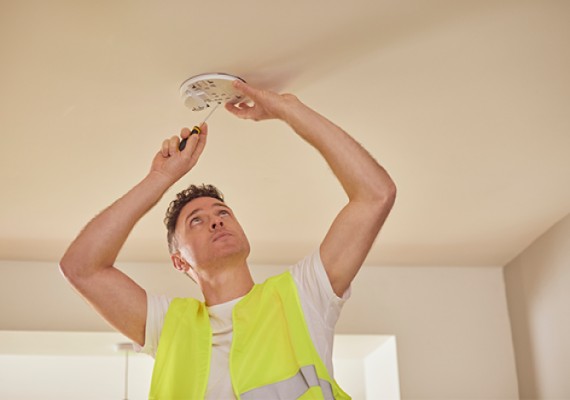

Mile End Business Park, Maesbury Road, Oswestry, Shropshire, United Kingdom, SY10 8NR
T: 01691 664100
E: enquiries@aico.co.uk
W: https://www.aico.co.uk/
BSI (British Standards Institution) were established in 1901 to promote trade, reduce waste and to protect the consumer by using recognised conformity markers. The BSI Kitemark, a symbol to represent quality, was then adopted 2 years later. The BSI was granted Royal Charter status in 1929, making it one of the most recognised standard issuers and a champion for consumers.
There are currently over 30,000 live standards. Aico promote many of these standards as best practice when providing recommendations on fire and carbon monoxide safety, including the following:
BS 5839-6: Code of practice for the design, installation, commissioning and maintenance of fire detection and fire alarm systems in domestic premises.
BS EN 50292: A guide on the selection, installation, use and maintenance of electrical apparatus for the detection of Carbon Monoxide in domestic premises, caravans and boats.
Additionally, all Aico alarms meet the relevant manufacturing standards and are third-party certified by BSI to carry the Kitemark.
Why follow British Standards?
Following British Standards provides a mechanism to gauge whether a service or a product is fit for purpose. Without it, it would be impossible to verify whether a system is suitable or able to operate as required in emergency conditions. As an installer, following the British Standards and the product’s manufacturer’s instructions, ensures that the installation is correct and of high quality. This in turn, results in safer homes.
At Aico, we will continue to follow British Standards when manufacturing products, providing recommendations and delivering training. They are there to give guidance, offer advice and give us a best practice document to align our training programmes with.
How to apply British Standards
When installing a Fire Detection system, always refer to Table 1 in BS 5839-6. This table describes the grade of alarm and category of coverage required within a domestic dwelling to reach the standard, which is a great place to start when carrying out a domestic installation. However, this isn’t the only requirement you should consider.
Whilst British Standards provides useful information, it is essential to take the resident’s individual needs into account. When installing alarms for a resident with additional needs, such as someone who is hard of hearing or with mobility issues, additional sounders and indicators are required to give them the earliest warning in an emergency. There are multiple alarm system solutions to suit all different types of needs. For example, Aico’s Ei171RF RadioLINK strobe light is built to indicate a visual warning in living spaces when the alarm system has activated. Equipped with a simple strobe light and a lens specifically for wide-angle light output, it has been designed for use in daytime rooms.
To find out more about Standards, Regulations and Legislations, visit www.aico.co.uk
View Previous Article
Vision Built to unveil new brand identity at Education Estates 2025